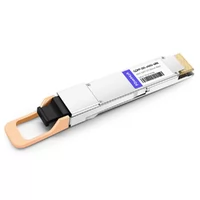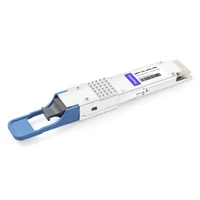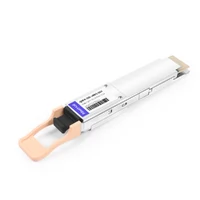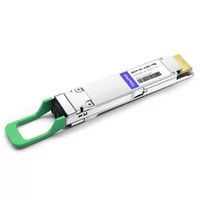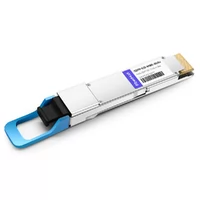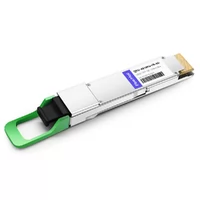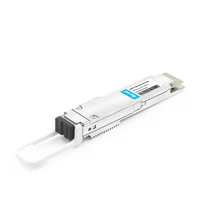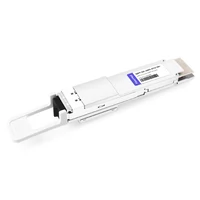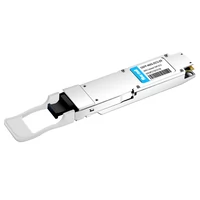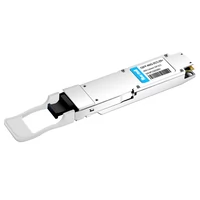FiberMall, in collaboration with Lumentum-Neophotonics, Cisco-Acacia, and EXFO, has successfully proposed a 927-kilometer end-to-end interoperable 400-GbE (Gigabit Ethernet) optical transmission system. This system integrates the latest 400G pluggable optical modules, addressing the needs of Ethernet clients (IEEE 802.3 400GBASE), data center interconnects (OIF 400-ZR), and metro/regional (400G OpenROADM) networks. The 400G optical modules used come from different suppliers and incorporate DSP chips from various vendors. Below is a summary of the main features of the 400GBASE, 400-ZR, and 400-ZR+ optical modules as defined by major standardization bodies:
1. 400G Data Center Interconnect Applications
Handled by OIF through the 400 ZR multi-source agreement (MSA). The 400ZR optical interface can be easily inserted into Ethernet switches or IP routers, provided the transceiver form factor meets the equipment requirements, making it particularly suitable for IP over WDM applications, typically with transmission ranges of 40 to 120 kilometers.
400ZR Transceivers: Use C-band tunable lasers, DP-16QAM modulation at 59.84-Gbaud, and C-FEC. The connection combines internal Hamming codes and external staircase codes, with an overhead of 14.8%. At BER = 10^-15, the coding gain of C-FEC is 10.8 dB, with a pre-FEC BER threshold of 1e-2. The 400ZR optical modules require an OSNR greater than 26 dB at 0.1 nm resolution bandwidth for back-to-back operation.
2. 400G Metro/Regional Networks
Addressed by OpenROADM and OpenZR+. OpenZR+ focuses on transmitting 400GbE data frames, while OpenROADM encapsulates 400GbE streams into OTN containers. Due to the higher efficiency of Open-FEC (O-FEC) compared to C-FEC, OpenROADM and OpenZR+ transceivers cover metro/regional links with multiple fiber spans, optical amplifiers, and ROADMs (reconfigurable optical add-drop multiplexers).
400G OpenZR+: Uses 63.14-Gbaud DP-16QAM and O-FEC, with an overhead of 15.3%. O-FEC provides a coding gain of 11.6 dB at BER = 10^-15, with a pre-FEC threshold of 2e-2. The required OSNR for back-to-back operation in 0.1 nm bandwidth is 24 dB.
This joint testing demonstrates the capability to integrate advanced 400G pluggable optics from multiple vendors, ensuring interoperability and meeting the diverse needs of modern optical networks across various applications.
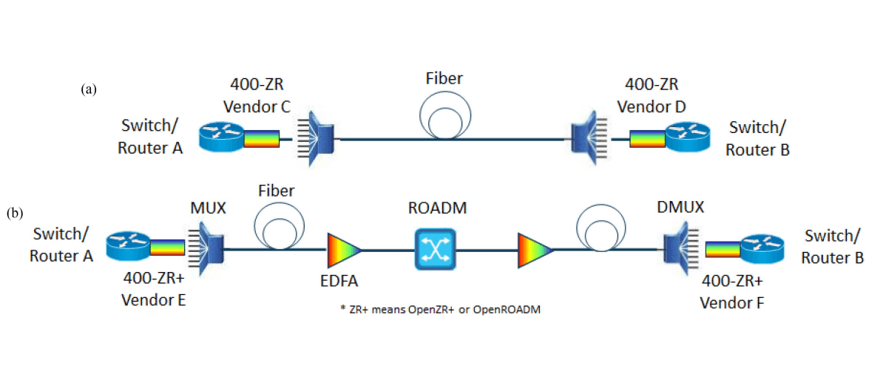
Experiment Environment for Three Application Scenarios
Modulation: PAM4 at four O-band CWDM wavelengths.
Symbol/Data Rate per Wavelength: 53.125-Gbaud/106.25-Gbps.
Power Consumption: ~12W.
Transmission Distance: 2km.
2. 400G-OpenROADM:
Conversion: Electrical-to-optical, encapsulating 400-GbE frames into OTU4 (Optical Transport Unit).
Transceiver: 400G-OpenROADM CFP2 digital coherent optics (DCO).
Modulation: 400G DP-16QAM with O-FEC.
Symbol Rate: 63.14 Gbaud.
Data Rate: 505.11 Gbps.
Spectra: Spectrum of 58 WDM channels at the transmitter output and recovered signal spectrum after 800km.
3. 400-ZR:
Standard: OIF with DP-16QAM and C-FEC.
Symbol/Data Rate: 59.84-Gbaud/478.75-Gbps.
Power Consumption: ~16.5W.
Spectra: Spectrum at the transmitter end.
4. Coherent Transceivers:
CFP2-DCO for OpenROADM: Includes a 7nm FinFET DSP ASIC and integrated transceiver optical sub-assembly (TROSA).
TROSA Components: Optical chips and high-speed ICs, including MZM drivers, TIAs, and DS DBR lasers.
Modulation: InP DP-QPSK with integrated SOA to compensate modulation loss.
Receiving Functions: Dual-polarization InP optical 90° hybrids with VOAs and four-channel differential TIAs.
Laser, Transmitter, and Receiver Functions: All encapsulated in the TROSA.
Supported Formats: 100/200/300/400G DP QPSK/8QAM/16QAM, with baud rates from 31 to 66 Gbaud to optimize link coverage, capacity, and spectral efficiency.
5. OE-MCM Option:
Integration: Silicon photonic PIC and DSP.
Optimization: Reduces signal integrity issues by placing the laser outside the OE-MCM package, eliminating unwanted thermal coupling between the DSP and the laser.
These testing environments and transceiver characteristics highlight the advanced capabilities of 400GbE optical transmission systems, ensuring robust performance across various application scenarios, including data center interconnects, metro/regional networks, and Ethernet client services. The collaborative efforts of multiple vendors and the integration of different technologies underscore the versatility and scalability of modern optical networking solutions.
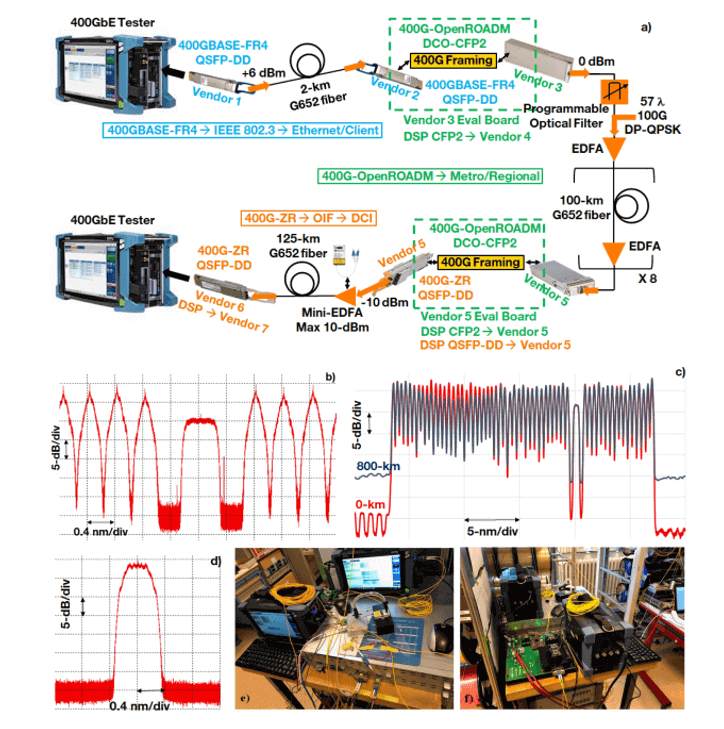
Final Experimental Results
- 2km 400GBASE-FR4:
After 2km of fiber, the QSFP-DD received a total power of approximately +4.5 dBm across four CWDM channels.
The measured pre-FEC bit error rate (BER) was approximately 1.4e−4, ensuring error-free transmission over this specific fiber segment.
- 8 x 100km 400G-OpenROADM:
The BER for the 400G-OpenROADM channel was measured, with optimal input power ranging from +1 dBm to +3 dBm. Performance remained very flat across this range, regardless of distance.
The 400G OpenROADM channel successfully covered 800 km with a BER of 1.6 × 10−2, received OSNR of 25 dB, and an OSNR margin of approximately 0.8 dB.
By adding a programmable optical filter after the CFP2-DCO transmitter, the insertion of a 75 GHz WSS cascade was simulated. The experiment demonstrated that at 800 km, no more than four WSSs were cascaded, while at 500 km, up to 20 WSSs were possible.
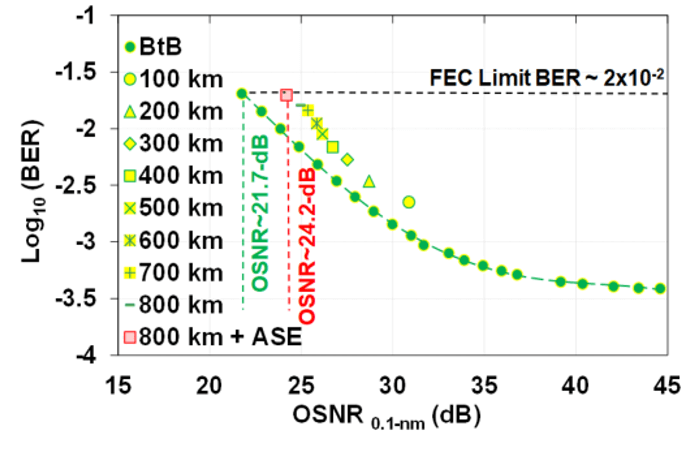
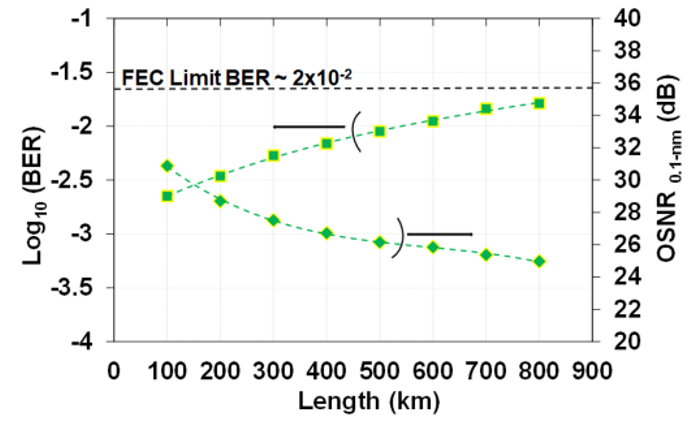
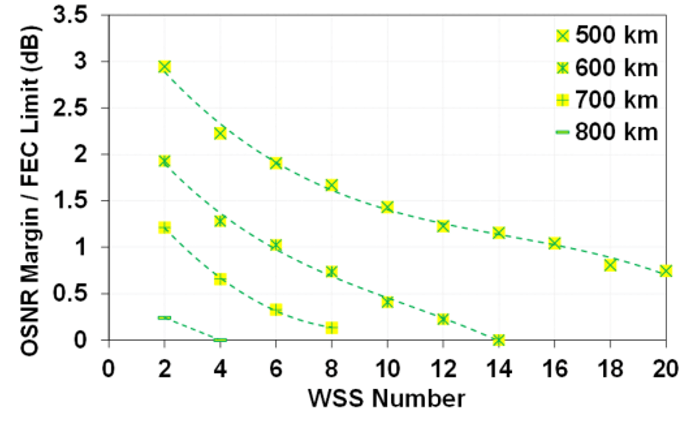
- 125km 400-ZR:
In a back-to-back (BtB) setup, the QSFP-DD receiver’s sensitivity was measured at approximately -21 dBm.
Without any EDFA, the 400G signal could traverse 40 km of fiber with an optical budget of approximately 10 dB (including fiber and connector losses).
With a +10 dBm mini-EDFA, error-free transmission over 125 km was achieved with an optical budget of approximately 26.5 dB, limited by the receiver’s dispersion compensation capability. The measured ROSNR (~24 dB) was significantly below the 400-ZR MSA requirement (ROSNR = 26 dB).
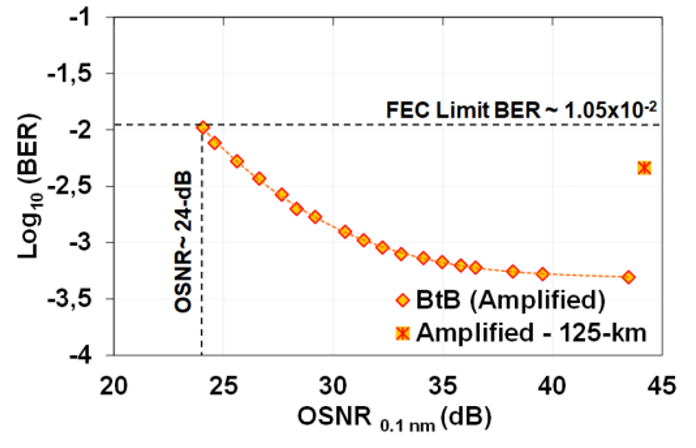
In summary, these experiments demonstrate the collaborative efforts of device, module, and test vendors in showcasing 2 km 400GBASE-FR4, 8 x 100 km 400G OpenROADM, and 125 km 400-ZR optical transmission. The 400-ZR+ QSFP-DD will be directly inserted into IP routers and Ethernet switches. The upcoming 400-ZR and 400-ZR+ QSFP-DD modules with 0 dBm output power, featuring integrated micro-EDFA or SOA, are poised to become pivotal technologies for DCI and metro/regional transmission networks using the IPoWDM architecture.
Table of Contents
ToggleRelated Products:
-
 QSFP-DD-400G-SR8 400G QSFP-DD SR8 PAM4 850nm 100m MTP/MPO OM3 FEC Optical Transceiver Module
$149.00
QSFP-DD-400G-SR8 400G QSFP-DD SR8 PAM4 850nm 100m MTP/MPO OM3 FEC Optical Transceiver Module
$149.00
-
 QSFP-DD-400G-DR4 400G QSFP-DD DR4 PAM4 1310nm 500m MTP/MPO SMF FEC Optical Transceiver Module
$400.00
QSFP-DD-400G-DR4 400G QSFP-DD DR4 PAM4 1310nm 500m MTP/MPO SMF FEC Optical Transceiver Module
$400.00
-
 QSFP-DD-400G-SR4 QSFP-DD 400G SR4 PAM4 850nm 100m MTP/MPO-12 OM4 FEC Optical Transceiver Module
$450.00
QSFP-DD-400G-SR4 QSFP-DD 400G SR4 PAM4 850nm 100m MTP/MPO-12 OM4 FEC Optical Transceiver Module
$450.00
-
 QSFP-DD-400G-FR4 400G QSFP-DD FR4 PAM4 CWDM4 2km LC SMF FEC Optical Transceiver Module
$500.00
QSFP-DD-400G-FR4 400G QSFP-DD FR4 PAM4 CWDM4 2km LC SMF FEC Optical Transceiver Module
$500.00
-
 QSFP-DD-400G-XDR4 400G QSFP-DD XDR4 PAM4 1310nm 2km MTP/MPO-12 SMF FEC Optical Transceiver Module
$580.00
QSFP-DD-400G-XDR4 400G QSFP-DD XDR4 PAM4 1310nm 2km MTP/MPO-12 SMF FEC Optical Transceiver Module
$580.00
-
 QDD-4X100G-FR-Si QSFP-DD 4 x100G FR PAM4 1310nm 2km MTP/MPO-12 SMF FEC CMIS3.0 Silicon photonics Optical Transceiver Module
$650.00
QDD-4X100G-FR-Si QSFP-DD 4 x100G FR PAM4 1310nm 2km MTP/MPO-12 SMF FEC CMIS3.0 Silicon photonics Optical Transceiver Module
$650.00
-
 QSFP-DD-400G-DCO-ZR 400G Coherent QSFP-DD DCO C-band Tunable Optical Transceiver Module
$6000.00
QSFP-DD-400G-DCO-ZR 400G Coherent QSFP-DD DCO C-band Tunable Optical Transceiver Module
$6000.00
-
 QSFP-DD-400G-DCO-ZR+ 400G Coherent QSFP-DD DCO C-band Tunable Optical Transceiver Module
$6500.00
QSFP-DD-400G-DCO-ZR+ 400G Coherent QSFP-DD DCO C-band Tunable Optical Transceiver Module
$6500.00
-
 OSFP-400G-DCO-ZR 400G Coherent OSFP-DCO ZR C-band Tunable Optical Transceiver Module
$7000.00
OSFP-400G-DCO-ZR 400G Coherent OSFP-DCO ZR C-band Tunable Optical Transceiver Module
$7000.00
-
 OSFP-400G-DCO-ZR+ 400G Coherent OSFP-DCO ZR+ C-band Tunable Optical Transceiver Module
$7000.00
OSFP-400G-DCO-ZR+ 400G Coherent OSFP-DCO ZR+ C-band Tunable Optical Transceiver Module
$7000.00

